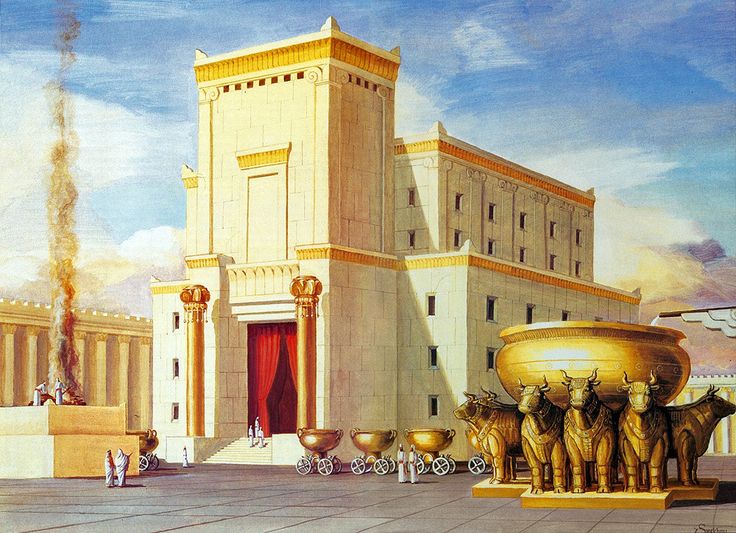When we commit to a life of Freemasonry, we are dedicated to self-improvement. In our Brotherhood, we Use the Tools to seek out light and reflect deeply on our ability to improve the world around us. While the tenants of Brotherly Love, Relief, and Truth ground our fraternity, the architecture of King Solomon’s Temple represents the path of development we all journey through as Masons. Biblical narratives and historical documentation of Lodge meetings provides insight into the history and symbolism of King Solomon’s Temple and the ways it relates to Freemasonry today. Let us learn of our history and valuable symbolism as we move forward in our craft.

Biblical Origins and History
According to Biblical accounts, the First Temple, or King Solomon’s Temple, was located in Jerusalem and completed in the year 957 BCE under the reign of King Solomon. Before Solomon, the Hebrew Bible describes the story of Solomon’s father, David, who united the Israelites and captured Jerusalem. Solomon’s father received messages from God to construct a great Temple that would provide a final resting place for the Ark of the Covenant, an elaborate chest encasing the two stone tablets of the Ten Commandments. This chest would be ensconced within the innermost room of the Temple, the Holy of Holies. King Solomon, known as a determined builder, enlisted the support of stonemasons to construct the Temple on behalf of God’s message to his father.
Scripture indicates that the temple was later looted and destroyed in 586-587 BCE by the Babylonians and King Nebuchadnezzar II. Biblical text describes how the Jews returned to the location of the Temple’s ruins to rebuild what was known as the Second Temple, only to find that the Ark of the Covenant was gone.
Temple Architecture and Freemasonry
Beyond any religious context, the building of this great structure provides a symbolic foundation for the process of self-development in Freemasonry. Masonic tradition and ritual refers to the physical architectural processes of the temple’s creation, but as a way to emulate the possibilities of self-growth and enlightenment. This structure depicts the capabilities of men when they work collaboratively, using the right tools to diligently develop themselves in order to be better for the world.
For instance, the process of building the temple provides inspiration and emulates the three degrees of the symbolic Lodge; Entered Apprentice, Fellowcraft, and Master Mason. Apprentices and craftsmen worked to prepare stone that would be used for building and assembly. Master Masons outlined plans and architectural direction to guide their Brethren, harmonious collaboration taking place. Throughout a Mason’s journey, candidates emulate different phases of the development of the Temple where they ultimately represent the structure as a whole upon completion of various degrees.
The Masonic Legend of Hiram Abiff
Related to the construction of the Temple, Masonic tradition records the legend of Hiram Abiff in the Third Degree. The allegory describes Hiram Abiff as Chief Architect working alongside King Solomon and Hiram of Tyre. Construction of the temple lasted years, and members of the craft were frustrated with the longevity of the building process and the time required to advance in their titles and expertise. Three demanded Hiram divulge the knowledge of a Master Mason in order to accelerate their advancement in Masonry without the required years of experience. Upon Hiram’s refusal, the men struck him dead.
In the night, the murderers moved his body outside the city to be buried, marking the site with a sprig of acacia. The grave, however, was soon discovered and those at fault were brought to justice. Freemasons throughout the world find meaning in the legend of Hiram as an example of faith, fidelity, courage, and justice.
How has the symbolism of King Solomon’s Temple impacted your journey as a Mason? Share your thoughts with us at OhioLodgeLife@gmail.com, or find us on Facebook and Twitter.